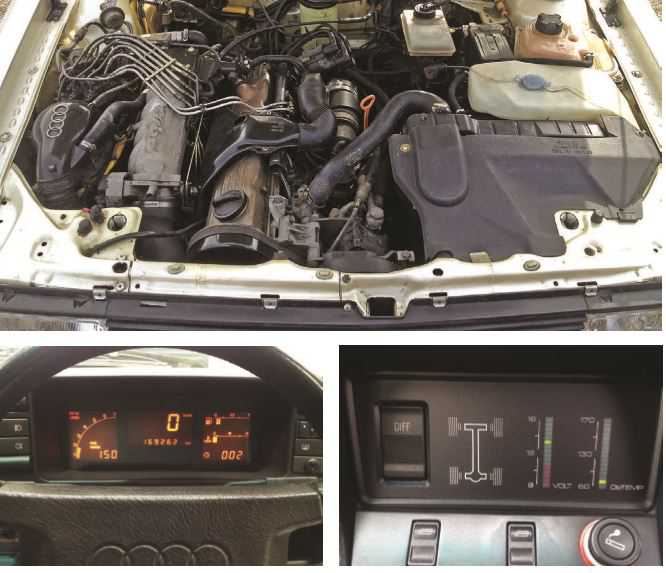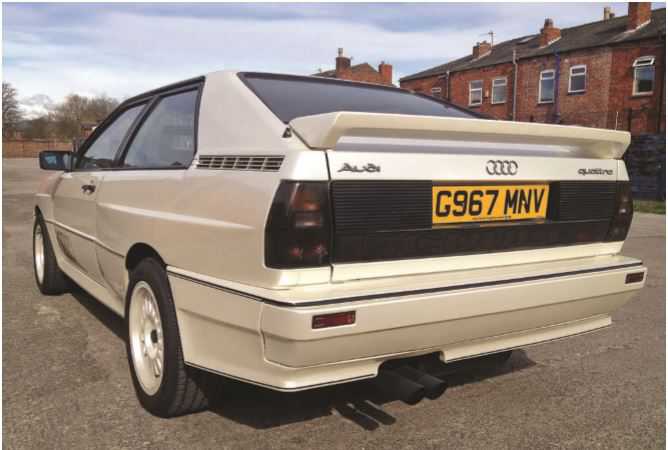MB Quattro- My story

The MB engine is instantly recognisable, as soon as you lift the bonnet. The intake plenum chamber has the very distinctive audi four rings cast into the top of it and the engine bay is very much more cluttered due to the increased pipework and other engine modifications. From the chassis point of view, the main improvement was the application by audi of a ‘torque sensing’ (torsen) centre differential. It had been under development for a number of years and was now ready to fit to the new quattro. Not just a simple 50:50 distribution of torque front to rear as with the previous centre diff, it could automatically vary the proportion of torque between the front and rear axles up to 75:25, depending on the requirement for traction. It actually weighed less than the original item and was positioned at the
back of the gearbox. From this moment on, quattros would only have a one-stage diff lock button on the dashboard, to lock the rear diff, as the centre diff was now essentially automatic in its operation. Inside, the car saw several changes over the previous model. The green digital dash pod that was introduced in 1984 was now replaced with a striking new orange display. The odometer had always been mechanical but, on this new unit, it was now electronically displayed. The displayed units for speed and fuel could still be
swapped between metric and imperial. Due to the fitting of the torque sensing differential, the diff lock button was revised. It was now a push-button device, replacing the rotary knob used on the previous model. available trim was the same and most cars were trimmed in the hard-wearing Graphite flannel.

On the outside, there were some minor cosmetic improvements. The plastic threedimensional badges on the boot lid were now replaced with some very smart chrome badges. There was also the inclusion of mini chrome audi rings, fitted on the centre line of the boot lid. This was obviously very popular, as many owners have since done this themselves on all variants of the quattro. another minor change to the appearance was that the side rear quarter window were now minus the ‘quattro’ decals. Sadly, these iconic decals would never be seen again on a Ur quattro. On its launch in august 1987, the ‘MB’ as it has become known, was priced at £28,655. It was a significant improvement over the previous version and brought the model right up to date in the market. More powerful, faster and easier to drive,
this model was built for two years and remained virtually unchanged throughout its production. In my view, the definitive colour for the MB is Pearl white, although there are also plenty of other exotic colours available for this model, especially when compared to early versions of the Ur quattro. I’ve driven a few MB quattros and I would recommend this version above all
of the others, especially if it is driveability that you are after. a word of caution, though, as the MB can be hard to source parts for – especially the engine – as it uses many components that aren’t fitted to any other quattro. This model brings to a close the 10-valve chapter of Ur quattro production. Next would come even more refinement and a great deal of power…
